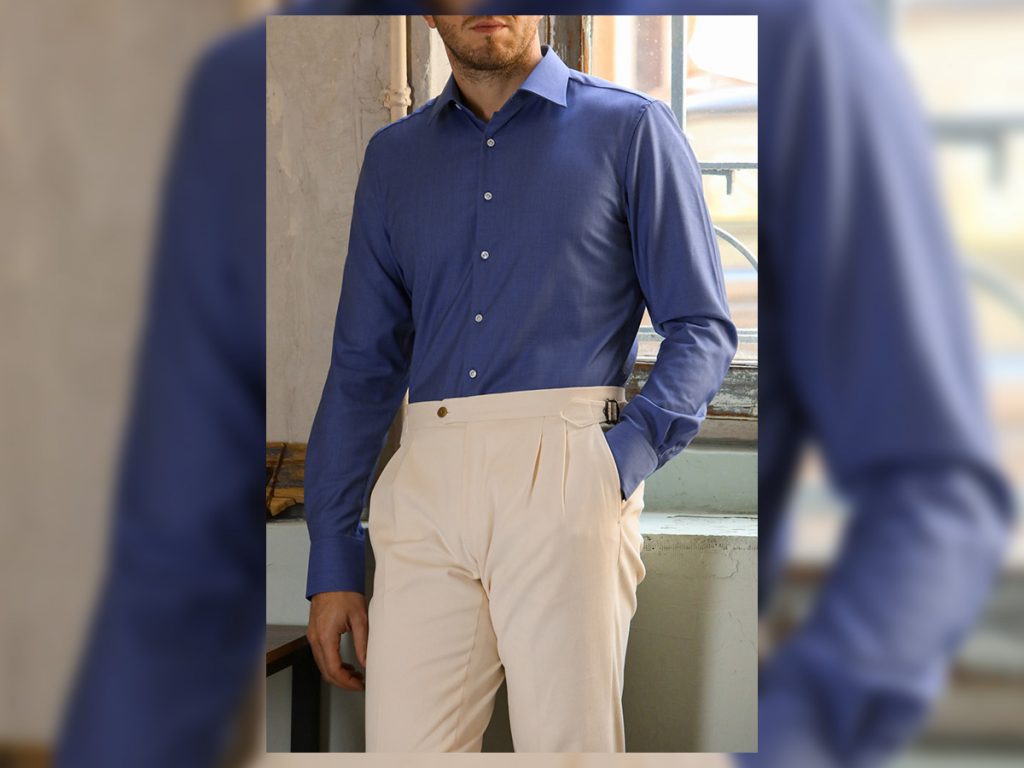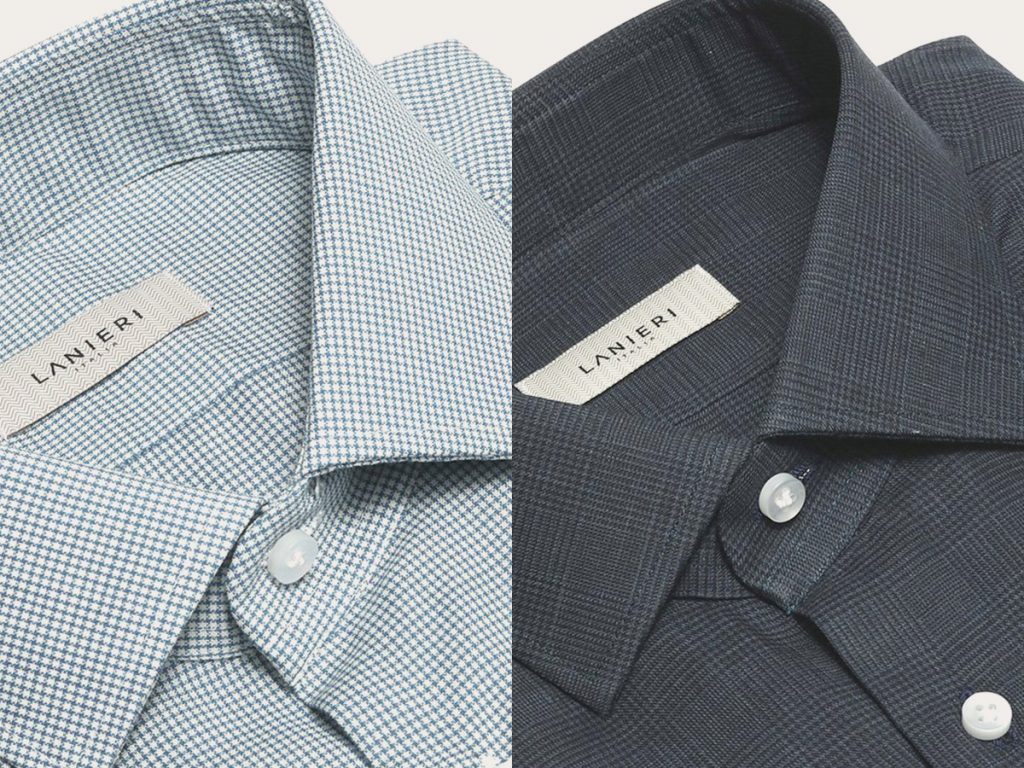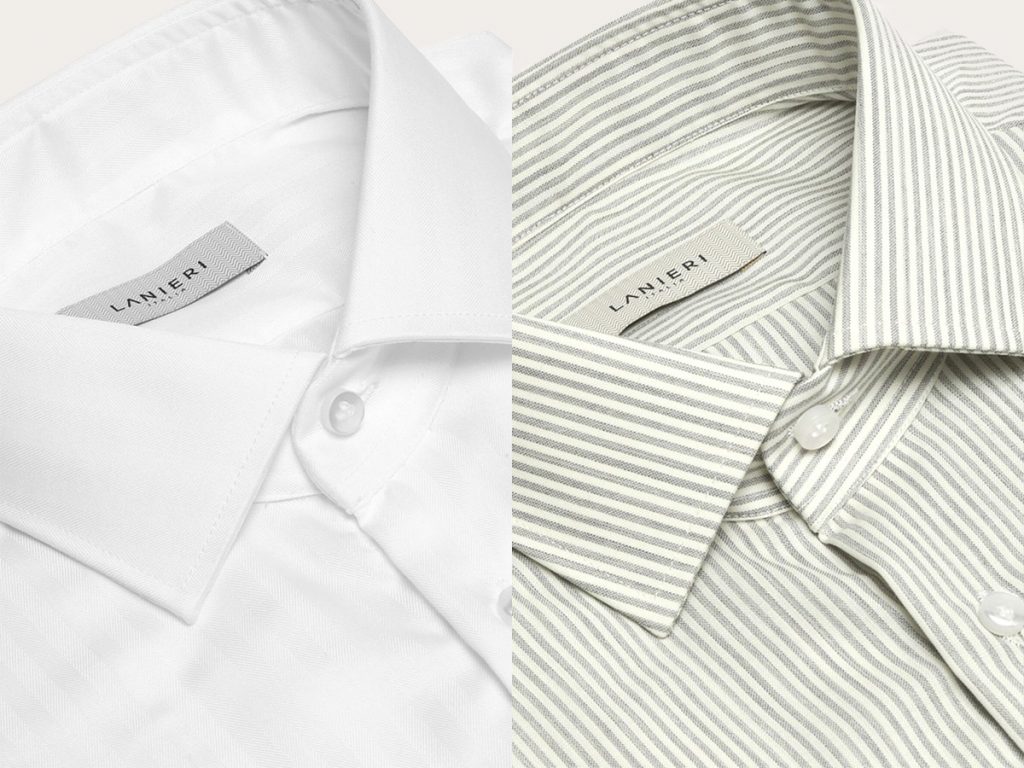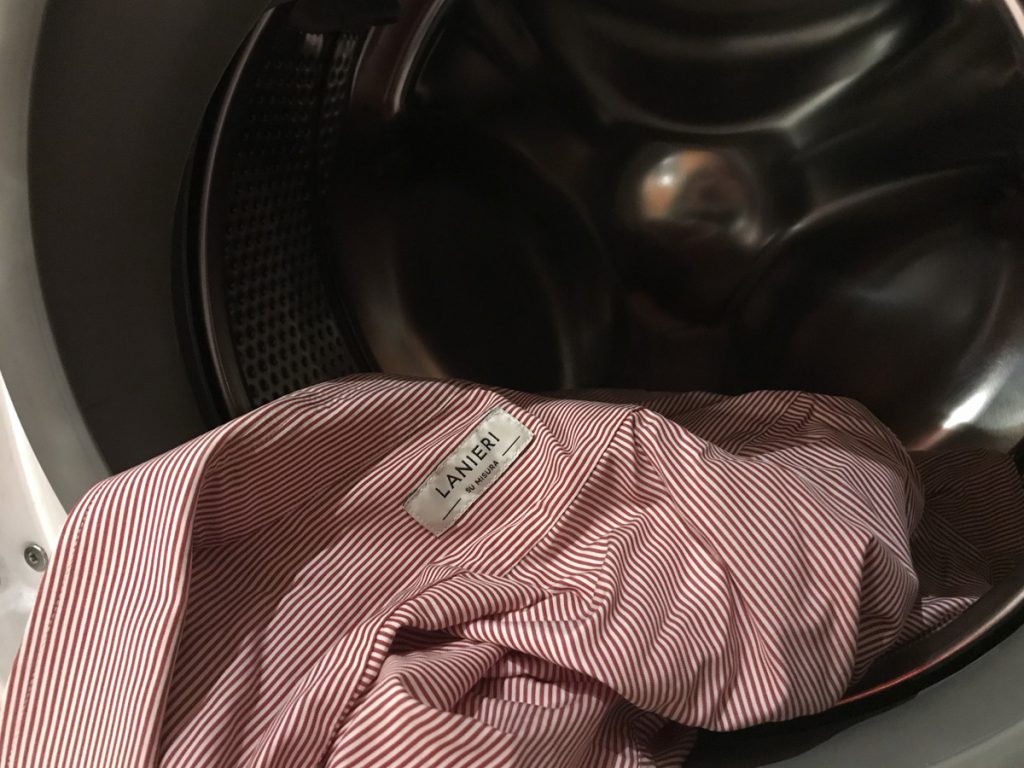Who ever said men’s shirts should only ever be made of cotton?
While it may be the most commonly worn kind, you might be pleasantly surprised to read that the wool shirt (the Merino wool shirt more specifically) can be a solid alternative to its cotton counterpart.
As a natural fiber, wool can be used in many ways and offers a number of advantages, all of which you can enjoy by choosing a wool shirt.
Read on to discover all the reasons to pick a wool shirt, how to keep it looking flawless as well as how and when to wear it.
Menu
How wool shirts are made
Features

A wool shirt offers all the great features of the material it is crafted from; in this case, some of the most interesting qualities are its breathability, its thermoregulating properties and its superior resistance.
Wool is a highly breathable fiber, which allows for adequate thermoregulation and encourages the elimination of humidity that may form between fabric and skin.
Proper perspiration allows to maintain an odor-free environment, even when skin sweats, which makes a wool shirt a highly suitable garment for people who may suffer from excessive sweating.
Moreover, it is crease-proof and doesn’t wrinkle as easily as other types of shirts, allowing it to look flawless all day long.
For all these reasons, shirts made of wool can be worn throughout the year, even during warmer months.
Merino wool shirts
Merino wool shirts deserve a special mention.
Merino wool stands out from all other types of wool due to its superior qualities: it feels softer to the touch and is more gentle on the skin, which means lower risks of irritation and allergies.
Compared to “standard” wool shirts, Merino wool shirts are softer, lighter yet sturdier.
Differences between wool and flannel shirts

Flannel and wool are often perceived as similar when it comes to shirts, but it isn’t quite right.
When wool is blended with cotton, it turns into what we know as flannel. This fabric feels somewhat fuzzy on the surface, which acts as a natural thermal insulation. Unlike wool styles, flannel shirts tend to sport a “hairier” look and feel more velvety.
Both are lightweight and resistant, although the flannel is somewhat less breathable: that makes it rather unsuitable for summer, and much more suited to winter. Wool, on the other hand, can also be worn in the summer thanks to the features we mentioned previously.
From a style perspective, a flannel shirt makes for a more casual and sporty look, both for its “fuzzy” quality and for the check pattern that often adorns this type of garment.
Wool, on the contrary, often comes in more classic solid hues, which might look somewhat more elegant and formal if the occasion calls for it.
Differences between wool and cotton shirts

Cotton typically is the most commonly used fiber for the making of shirts; most shirt fabrics are in fact made from this natural fiber and cotton shirts are the most widely available on the market.
Historically, wool has not been as commonly used to craft shirts but it has enjoyed a definite revival over the past few years. It is therefore especially useful to point out the differences between those two fibers, and compare their main attributes in order to choose wisely.
Cotton shirts are somewhat more practical: they can be machine-washed more often, just as long as the wash cycle is kept below 60 °C (140 °F).
Wool shirts require more attentive care however. While you may simply put a cotton shirt in the wash at the end of the day, a wool shirt needs to be treated somewhat more carefully; should you end up washing it at the wrong temperature, your shirt may be forever ruined.
Wool does come with several advantages however. Cotton doesn’t have a lot of natural stretch, which means it is more likely to look wrinkled by the end of the day; wool, however, keeps its shape for longer and is more resistant to the stress of everyday use.
Wool, as stated previously, is also much superior to cotton in terms of breathability and thermoregulation, which makes it a preferable choice for anyone who may look for those qualities.
Where and when to wear wool shirts
One of the great advantages of wool shirts is their versatility: they suit all kinds of occasions.
Thanks to their adaptability, they may be worn on the most elegant of occasions (in the office, for job interviews or dinner dates) or at more informal times (a cocktail with friends, a stroll around town or a day working from home).
In the office
For office-bound looks, pairing your wool shirt with a suit, layered under a jacket or blazer, is the best option; should the occasion call for it, one may add a wisely selected tie.
It is best to go for classic colors, such as a timeless pale blue, or discreet patterns such as stripes, and add a personal touch through a signature detail such as a straight point collar, which works in any situation.
Off-duty
Comfortable, practical, soft and lightweight, a wool shirt is just as perfect for off-time as it is for special occasions.
You may wear it underneath a sports jacket or with a knit and pair it all with casual chinos and a broken suit.
Or you may forego the outerwear and knitwear to wear it on its own, which will infuse your outfit with a more laidback and relaxed vibe.
On such occasions you may make a bolder color choice and select more distinctive patterns.
For superior comfort, we suggest you opt for a button-down or mandarin collar, or perhaps a popover style, which will allow you to feel relaxed and give your look a sense of ease.
Summer or winter?
As we pointed out previously, wool shirts can be worn in the fall-winter season just as well as in the spring-summer, all thanks to wool’s thermoregulating properties.
Your skin will have room to breathe in the summer and will be kept warm on colder days. For that reason, the wool shirt truly is a shirt for all seasons.
How to care for your wool shirt

When you wash your wool shirt, you should always be mindful of temperature. We suggest a delicate wash cycle at no more than 30 °C (86 °F); you may also use special detergent that is specifically meant for wool in order to protect your garment and its color.
We also recommend avoiding direct exposure to sunlight when drying it and setting your iron to lower temperatures.
Choose your wool shirt
A wool shirt is a perfect alternative to its cotton counterpart and the ideal choice for anyone who wants to wear something different but just as functional.
Just as appropriate for warmer days, it will prevent you from sweating yet still keep you warm once the temperatures drop.

